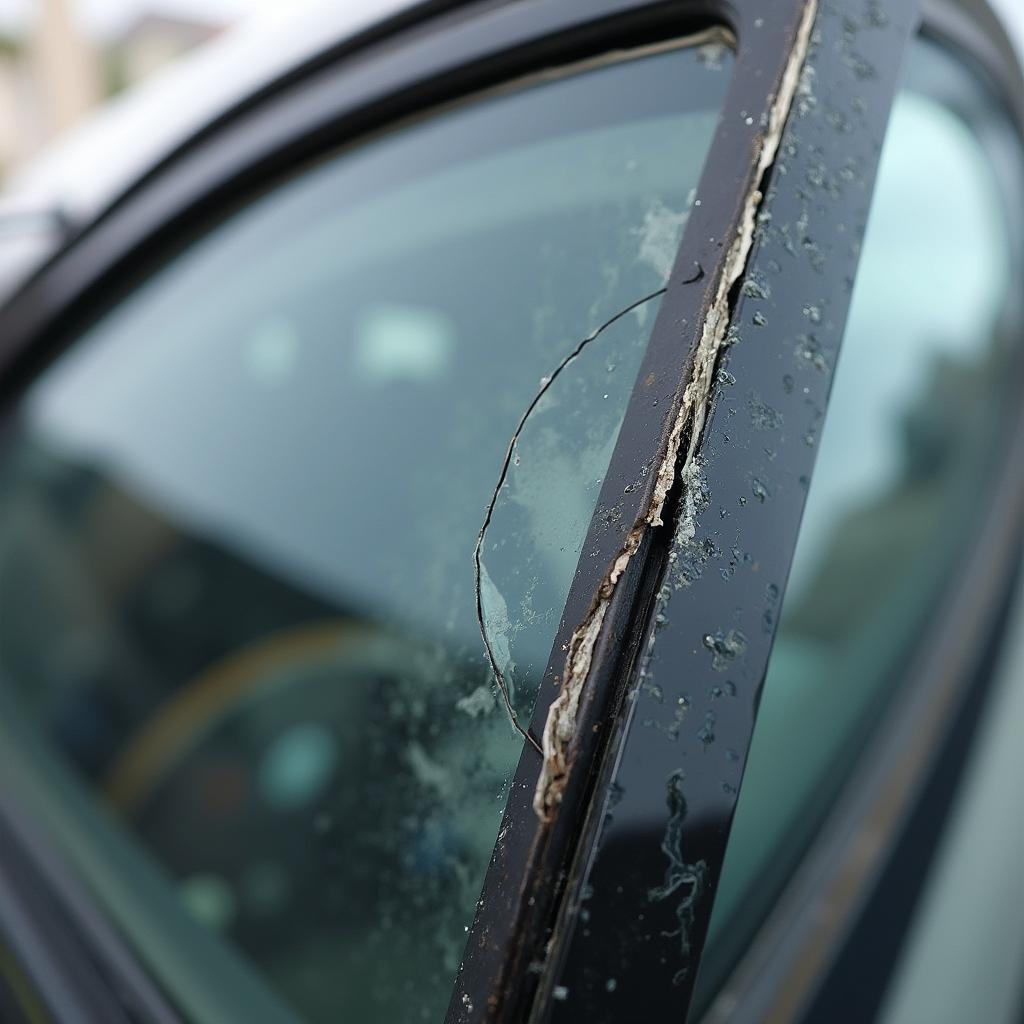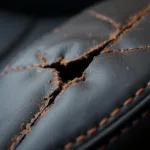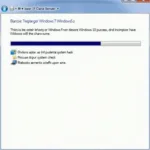A damaged car window seal can lead to a whole host of problems, from annoying wind noise to serious water leaks. Fortunately, repairing a car window seal is often a manageable DIY job that can save you a trip to the mechanic. This comprehensive guide will walk you through everything you need to know about how to repair car window seals, empowering you to tackle the issue head-on.
Understanding Car Window Seal Problems
Before diving into the repair process, it’s crucial to understand the different types of car window seal problems and their causes.
Types of Car Window Seal Damage:
- Cracks and Tears: Small cracks or tears in the rubber seal are common and often occur due to age, exposure to the elements, or improper cleaning methods.
- Dry Rot: Over time, rubber seals can dry out, becoming brittle and prone to cracking. This is often accelerated by prolonged exposure to sunlight and extreme temperatures.
- Seal Shrinkage: In some cases, car window seals can shrink, creating gaps that allow water and air to seep through.
- Adhesive Failure: The adhesive that bonds the seal to the car window frame can weaken over time, causing the seal to detach partially or completely.
Common Causes of Car Window Seal Damage:
- Age: Like any car part, window seals have a limited lifespan and naturally deteriorate over time.
- Weather Exposure: Prolonged exposure to sunlight, UV rays, rain, snow, and extreme temperatures can accelerate wear and tear.
- Improper Cleaning: Using harsh chemicals, abrasive cleaners, or scrubbing too aggressively can damage the rubber seal.
- Physical Damage: Accidents, debris impact, or improper window installation can also cause damage to the seal.
Assessing Your Car Window Seal
 Car Window Seal Showing Cracks and Damage
Car Window Seal Showing Cracks and Damage
To determine the extent of the damage and the best course of action, you’ll need to carefully inspect your car window seal.
How to Inspect:
- Visually Examine the Seal: Look for any visible cracks, tears, gaps, or signs of detachment. Pay close attention to the corners, where damage often occurs first.
- Feel for Damage: Run your fingers along the seal, feeling for any bumps, ridges, or inconsistencies in texture.
- Check for Leaks: Spray water around the window seal (both inside and outside the car) and check for any signs of water seeping through.
DIY Car Window Seal Repair: A Step-by-Step Guide
If you’ve determined that your car window seal needs repair, follow these steps for a successful DIY fix.
Materials You’ll Need:
- Cleaning Solution (mild soap and water or isopropyl alcohol)
- Microfiber Cloths
- Masking Tape
- Rubber Seal Adhesive (choose a product specifically designed for automotive use)
- Applicator Tool (usually included with the adhesive)
- Plastic Scraper (optional, for removing old adhesive)
Steps:
- Clean the Area: Thoroughly clean the car window seal and the surrounding area with a mild cleaning solution. This removes dirt, debris, and any residues that might interfere with the adhesive.
- Mask Off the Area: Use masking tape to protect the areas around the seal where you don’t want to apply adhesive. This ensures a clean and precise repair.
- Apply the Adhesive: Carefully follow the instructions on your chosen rubber seal adhesive. Using the applicator tool, apply a thin, even bead of adhesive along the damaged section of the seal or the entire seal if needed.
- Press and Secure: Gently press down on the seal to ensure good contact with the adhesive. If necessary, use clamps or weights to hold the seal in place while the adhesive cures.
- Allow Proper Drying Time: Refer to the adhesive manufacturer’s instructions for the recommended drying or curing time. Avoid closing or operating the window during this period.
- Remove Masking Tape: Once the adhesive is fully cured, carefully remove the masking tape.
- Test for Leaks: Spray water around the repaired seal to ensure there are no leaks.
When to Consult a Professional
While minor car window seal repairs can often be handled with DIY methods, some situations warrant the expertise of a professional auto glass technician.
Seek Professional Help If:
- The Damage is Extensive: If the seal is severely damaged or detached in multiple areas, a professional repair or replacement is recommended.
- You’re Dealing with Rust: If you notice rust around the window frame, it’s essential to address it promptly as it can compromise the integrity of the seal and lead to further damage.
- You’re Uncomfortable with DIY Repairs: If you’re not comfortable tackling the repair yourself or lack the necessary tools and materials, it’s best to leave it to the professionals.
Tips for Maintaining Car Window Seals
Prevention is key to extending the lifespan of your car window seals. Here are some proactive measures you can take:
- Regular Cleaning: Clean your car window seals regularly using a mild cleaning solution and a soft cloth. Avoid harsh chemicals or abrasive cleaners that can damage the rubber.
- UV Protection: Apply a UV protectant spray or gel to your car window seals to shield them from the damaging effects of the sun’s ultraviolet rays.
- Lubricate the Seals: Periodically lubricate the rubber seals with a silicone-based lubricant to keep them pliable and prevent drying and cracking.
Conclusion
A properly functioning car window seal is crucial for a comfortable and leak-free driving experience. By understanding the common causes of car window seal damage, knowing how to assess the problem, and following the DIY repair steps outlined in this guide, you can effectively address minor seal issues and extend the lifespan of your car’s window seals. However, always remember that severe damage or complex repairs are best left to the expertise of a qualified auto glass professional.
FAQs about Repairing Car Window Seal
Can I use any type of adhesive to repair a car window seal?
It’s crucial to use an adhesive specifically designed for automotive rubber seals. These adhesives are formulated to bond to rubber and withstand the harsh conditions of the automotive environment.
How long does it take for car window seal adhesive to dry?
Drying time varies depending on the specific adhesive used. Refer to the manufacturer’s instructions for the recommended drying or curing time.
Can I still drive my car with a damaged car window seal?
While driving with a slightly damaged seal might seem harmless, it’s best to address the issue as soon as possible. A damaged seal can worsen over time, leading to water leaks, wind noise, and potential damage to your car’s interior.
How much does it cost to have a car window seal professionally repaired?
The cost of professional car window seal repair can vary depending on the extent of the damage, the type of car you have, and the labor rates in your area.
Can I prevent car window seal damage?
While some wear and tear are inevitable, regular cleaning, UV protection, and lubrication can help prevent premature damage to your car window seals.
Still have questions or need assistance with your car window seal?
Contact us via WhatsApp: +1(641)206-8880 or Email: [email protected]. Our team of car repair experts is available 24/7 to provide personalized guidance and support.


